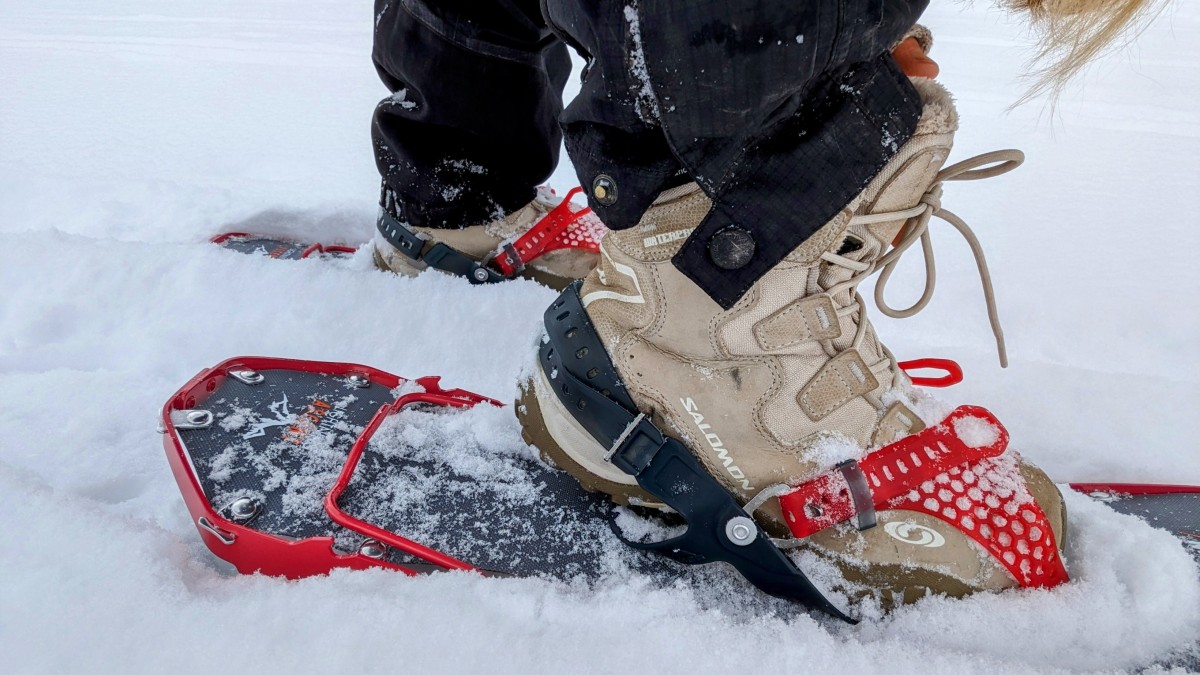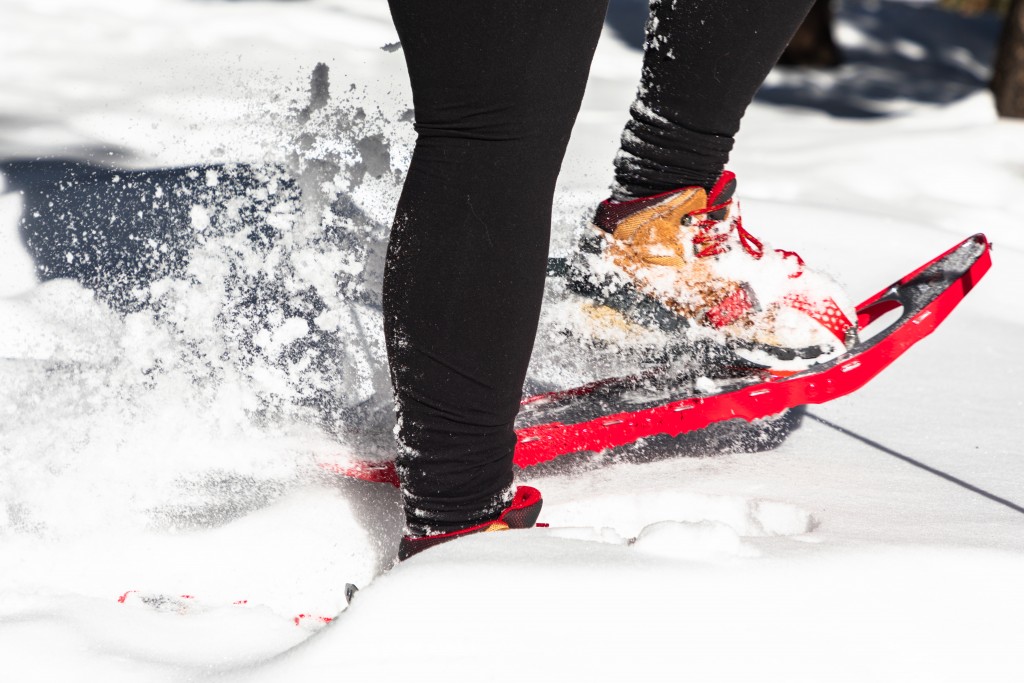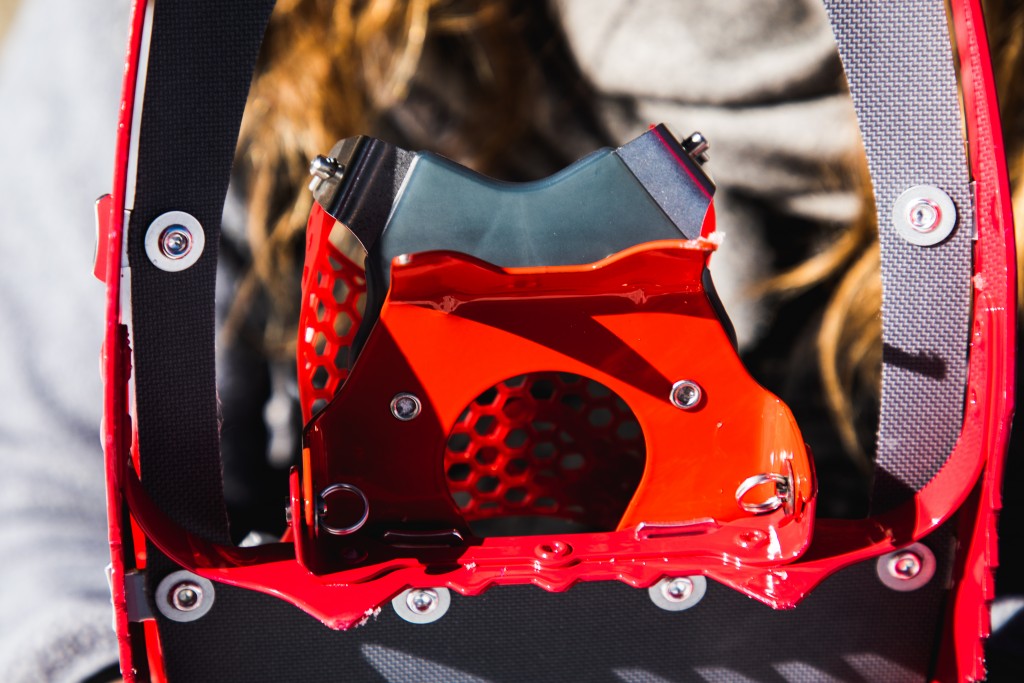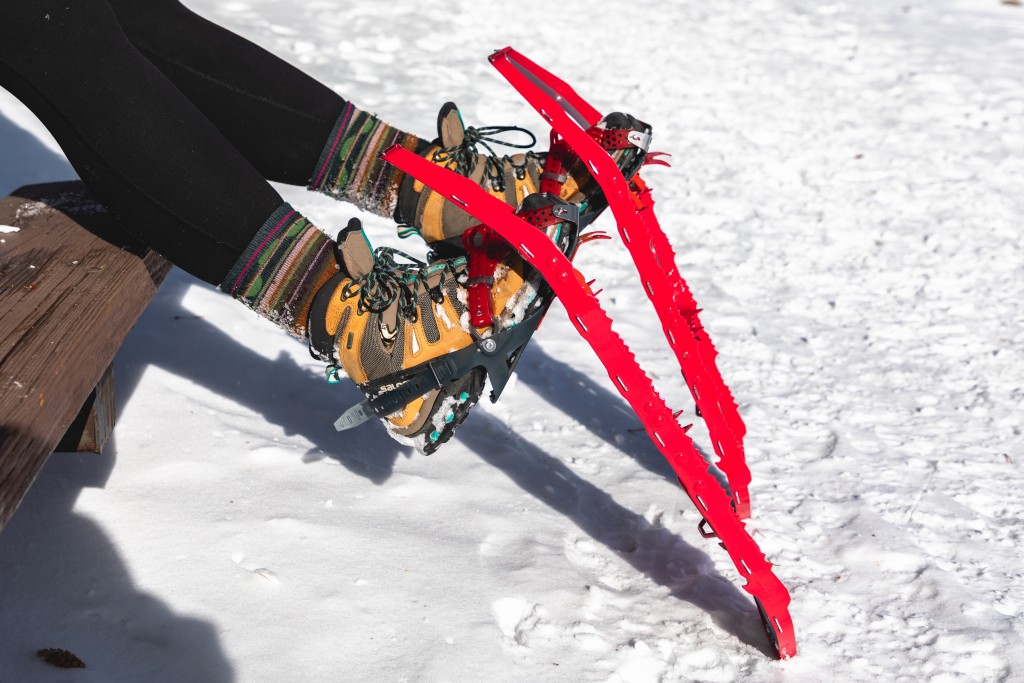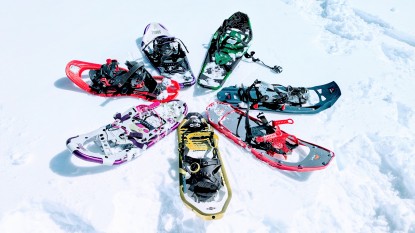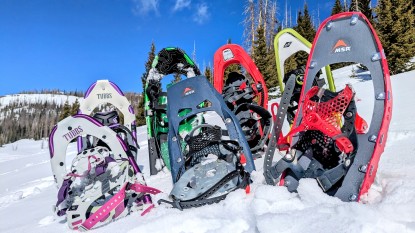Our Verdict
Compare to Similar Products
 This Product
MSR Lightning Ascent - Women's | |||||
|---|---|---|---|---|---|
| Awards | Best Overall Snowshoe for Women | Best for Backcountry Powder | Best Bang for Your Buck | Excellent Balance of Traction and Stride | Most User-Friendly Design at a Moderate Price |
| Price | $389.95 at REI Compare at 3 sellers | $195.97 at Amazon Compare at 2 sellers | $169.95 at REI Compare at 3 sellers | $272.77 at Amazon Compare at 2 sellers | $219.95 at Backcountry Compare at 2 sellers |
Overall Score  |
|||||
| Star Rating | |||||
| Bottom Line | If superior traction and versatility out in the steep and variable backcountry terrain is what you're looking for, the Lightning Ascent delivers in spades | These snowshoes provide excellent flotation and support for heavy loads in all winter conditions, offering the float and durability you can trust for winter backpacking | Excellent traction and versatile bindings mean you will have no problem heading into a wide spectrum of snow types and terrain levels with this widely popular and durable snowshoe | A high-traction snowshoe, with a flexible deck, great for ice and packed snow | This snowshoe is perfect for everyday use with its easy-to-use and comfortable binding system, superior flotation, and ability to carry heavy loads |
| Rating Categories | MSR Lightning Ascen... | Tubbs Mountaineer -... | MSR Evo Trail Snows... | TSL Symbioz Hyperfl... | Tubbs Wilderness -... |
| Flotation (30%) | |||||
| Traction (30%) | |||||
| Walkability (20%) | |||||
| Bindings (20%) | |||||
| Specs | MSR Lightning Ascen... | Tubbs Mountaineer -... | MSR Evo Trail Snows... | TSL Symbioz Hyperfl... | Tubbs Wilderness -... |
| Measured Weight (per pair) | 3.94 lbs | 4.56 lbs | 3.69 lbs | 4.31 lbs | 4.12 lbs. |
| Sizes Available | 22", 25" | 21", 25", 30" | 22" | 20.5", 23.5", 27" | 21", 25", 30" |
| Binding System | Paragon Binding | Active Fit 2.0 | Paraglide | Symbioz telescopic bindings | Quick-Fit binding |
| Frame Material | Aluminum | Aluminum | Martensitic steel | Composite, carbon reinforcements | Aluminum |
| Measured Surface Area | 143.0 in² | 157.5 in² | 162.8 in² | 127.1 in² | 156.1 in² |
| Measured Dimensions | 7.25 x 22 sq in | 8.5 x 21 sq in | 8 x 22 sq in | 7.5 x 20.5 sq in | 8 x 21 sq in |
| Binding Mount | Full | Full | Full | Full | Full |
| Crampon | DTX crampon | Anaconda toe crampon Python heel crampon |
Steel traction rails | Stainless steel toe crampon and verticle blades | Cobra toe and Tubbs heel crampon |
| Deck Material | TPU coated Nylon | Soft-Tec PVC-coated polyester | Polypropylene | Composite | Soft-Tec PVC-coated polyester |
| Flotation Tails Available? | Yes, 5" | No | Yes, 6" | No | No |
| Load with Tails (per size) | 22": up to 240 lbs 25": up to 270 lbs |
N/A | 22" : up to 250 lbs | N/A | N/A |
| Men's and Women's Versions? | Yes | Yes | Unisex | Unisex | Yes |
| Optimum Weight Load (per size) | 22": up to 180 lbs 25": 120-210 lbs |
21": 80-150 lbs 25" 120-200 lbs 30": 170-250 lbs |
One size: 180 lbs | 20.5": 65 - 180 lbs 23.5": 110 - 260 lbs 27": 150 - 300 lbs |
21": 80-150 lbs 25": 120-200 lbs 30": 170-250 lbs |
| Size Tested | 22" | 21" | 22" | 20.5" | 21" |
Our Analysis and Test Results
The Lightning Ascent is a versatile snowshoe that MSR designed for adventurous activities. If you enjoy ascending steep, rough terrain, the heel lifts will help you reserve some energy and adventure further. For descending icy hills, the aggressive DTX Crampons and caged bindings will help keep you on your feet and off your behind. If a stroll down a well-packed trail is more your style, then strap these on because the Lightning will offer an easy and natural stride without weighing you down.
Performance Comparison
Flotation
If you want traction and nothing else, you can wear crampons, right? When walking on fresh snow, the best snowshoes prevent you from sinking to your chest. The closer your feet are to the surface, the less energy you expend high-stepping out of postholes. The Lightning Ascent provides an ideal balance between walkability and flotation.
MSR designed the Lightning Ascent with a narrow frame that suits individuals with a narrow gait. Typically, greater surface area implies more effective flotation, but modern snowshoe design elements can enhance flotation without increasing bulkiness. The Lightning Ascent has a slim profile, but its lightweight aluminum frame helps keep it above the surface. The bindings can rotate almost 90 degrees from the deck, which helps in shedding snow. This feature reduces excess weight and increases float, making it more agile in powder.
If you plan to carry a heavy load or venture into fresh, deep snow, you may want to consider MSR's add-on flotation tails, which can add five inches of surface area. The option of these easy-to-deploy extensions gives you the flexibility of a maneuverable small-and-light snowshoe for packed trails and technical terrain, with an easy as-needed accessory for a flotation boost in powder.
Check out the men's MSR Lightning Ascent review as well. These offer all the same unique features but with a slightly wider frame and the ability to accommodate a bit larger boot. Regardless of gender, these are worth a gander if you prefer a larger snowshoe for increased flotation.
Traction
MSR engineered a shoe with versatile 360-degree traction that engages effectively no matter how you step and offers one of the most successful traction systems in our snowshoe lineup. Between the massive toe pick, horizontal traction rails, and sharp teeth lining the perimeter of the deck, there isn't a mountain the Lightning Ascent can't climb.
MSR engineered the DTX toe crampon for the Lightning Ascent with a continuous piece of martensite steel that comprises two sharp spikes. The bindings' hinge lets the crampons bite precisely into ice and hard snow, providing stability while navigating technical terrain. Spikes on other designs can be cumbersome and cause users to trip on flatter trails. However, our testers discovered that the Lightning's toe crampons are well-positioned to engage with the foot's angle, and we found them to be out of the way for easy walking on packed terrain.
MSR reinforces the crampon's initial bite with two spiked crossbars that reach laterally across the frame where the forefoot and heel typically land. These crossbars allow the shoe to dig into the snow with the foot's natural movement. Additionally, the aluminum frame has serrated edges along much of its circumference. While many tubular frames tend to slip when you shift your weight toward the outside of the snowshoe, the teeth on the Lightning's frame provide grip from side to side. With one of the best designs for lateral traction in our lineup, it is no surprise that the Lightning offers excellent traction while side-stepping or descending steep inclines. Despite the burly crampon and spiked crossbars, the Lightning is relatively lightweight, striking a rare balance of grip and agility.
Walkability
The Lightning has one of the slimmest profiles in our lineup, and the narrow taper towards the heel allowed our testers to walk without clicking the sides together. None of our team felt the need to widen their gait. Most women and smaller-framed individuals can enjoy a normal stride in varied snow conditions.
Although many smaller snowshoes sacrifice floatation for better stride ergonomics, the Lightning strikes a balance between the two due to its lightweight design, upturned deck, and the option for flotation tails. Walking in on packed or fresh snow feels comfortable, and its performance in challenging terrain is impressive. The hinge allows for almost a 90° rotation, which, combined with aggressive traction, provides step precision in high-consequence terrain where it's crucial to trust that your steps won't slip. Walking in flat or groomed areas still feels natural despite being optimized for technical terrain. The binding allows the deck to rotate, dumping snow and making it easy to transition between different terrains. The Ascent is an excellent choice for backcountry enthusiasts looking to push their limits in challenging conditions.
Bindings
Strapping into the Lightning Ascent is intuitive, and our testers had a great experience with MSR's comfortable and minimalistic Paragon binding. The Lightning has a cage-like toe strap and a stretchy, easy-to-use heel strap. The foot net is comfortable and second-skin secure even during downhill walks or kicking steps into rugged terrain.
We found it easy to secure the forefoot by pulling two straps that secure the webbing cradle over the toe. The initial setup in the front straps is most easily done gloveless. Our testers found that we did not need to readjust the front straps as they stretch flush against our shoe and stay put once fastened. You secure the straps in retainer loops; a closed, zero-slip design secures the straps in place better than any other design we tested. The binding system is secured with an easy-to-use heel strap, so once you've gotten through the initial fitting, the Lightnings are a breeze to put on and take off. While the front toe straps are difficult to handle with thick gloves on, they do not need to be adjusted every time. If you wear the same or similar boots each time you snowshoe, you only need to remove the heel strap to take off or put on the Ascents.
MSR designed the Lightning binding to provide maximum comfort and security to the wearer. The binding material stretches and fits snugly against the foot without causing any discomfort or pressure points. It is one of the most comfortable bindings available in the market. It accommodates a wide range of foot sizes and provides a secure fit throughout the range of motion. We even tried fitting a snowboarding boot into the binding and found it fit perfectly without any issues. We also tested the binding in below-freezing conditions and found that the straps remained malleable and stretchy. The last feature of note is an easily engaged heel lifter that saves your calves from Charlie-horsing on a mountain climb. The complete Paragon Binding system is ideal for backcountry adventures, providing security, comfort, and adaptability.
Should You Buy the MSR Lightning Ascent?
This model of snowshoes is quite expensive, and if you decide to purchase the five-inch add-on flotation tails, it will cost you even more. However, if you frequently go to the backcountry and safety is your priority, you might consider the Lightning Ascent model. It is very versatile, lightweight, and has excellent technical features. MSR is known for making durable products, and this model has won several awards over the years. While you could spend less on a more basic shoe, you might outgrow its capabilities and end up spending more on a new pair. The Lightning Ascent is an investment that will last you for years to come and allow you to navigate any terrain, from packed trails to advanced mountaineering.
What Other Snowshoes Should You Consider?
The Lighting Ascent performed consistently across all our categories and is an excellent shoe for various terrains, foot sizes, and experience levels. There are so many reasons why this is our snowshoe of choice, but if the price tag makes you queasy, you have other options. The MSR Evo Trail are a budget buy with dependable traction and float. The Tubbs Wilderness are high performers in all terrain but accommodate heavy loads at a more wallet-friendly price. If you want a shoe with incredible natural stride and stabilizing traction, the TSL Symbioz Hyperflex Elite has unparalleled stride ergonomics on packed trails.


